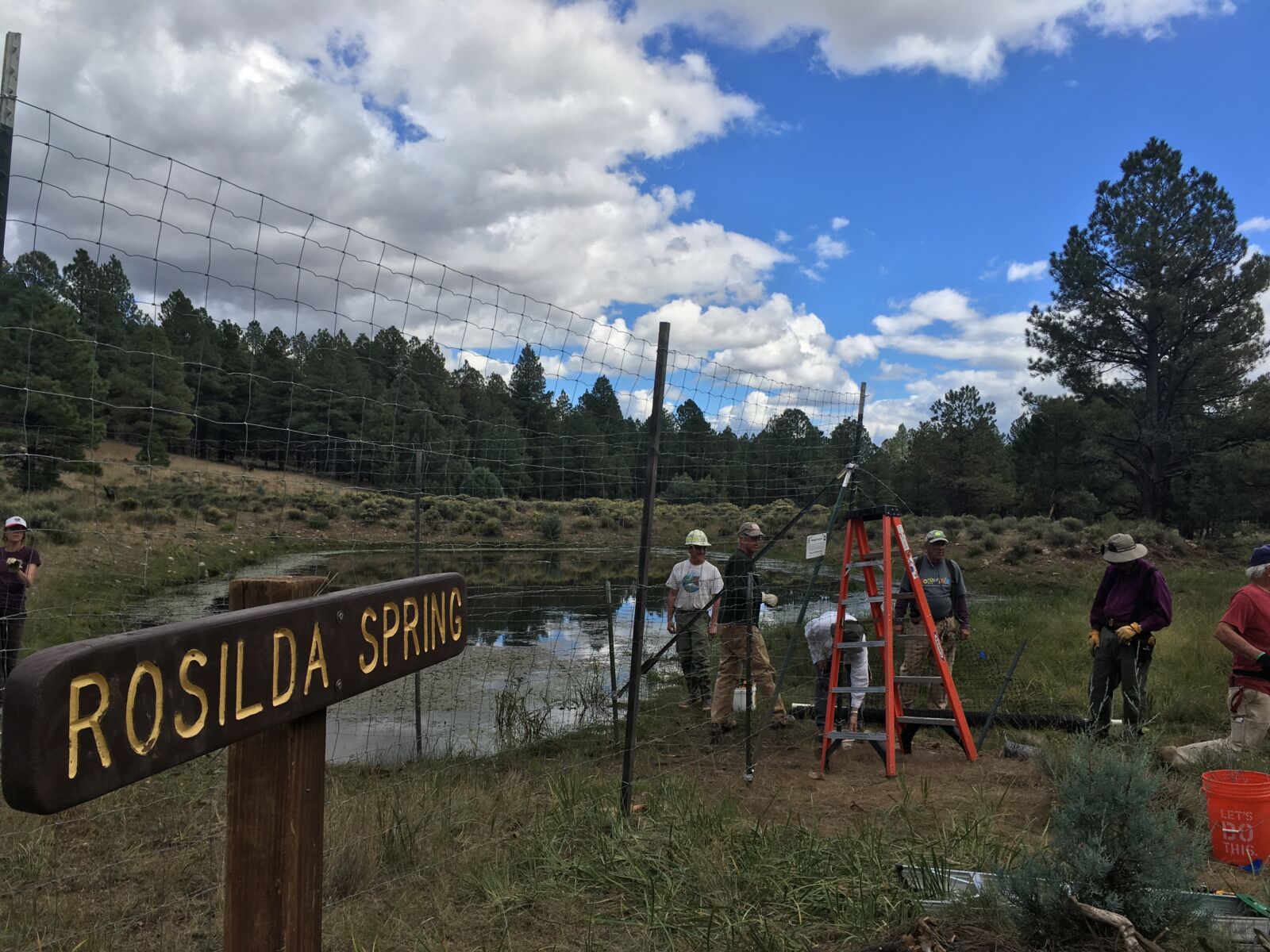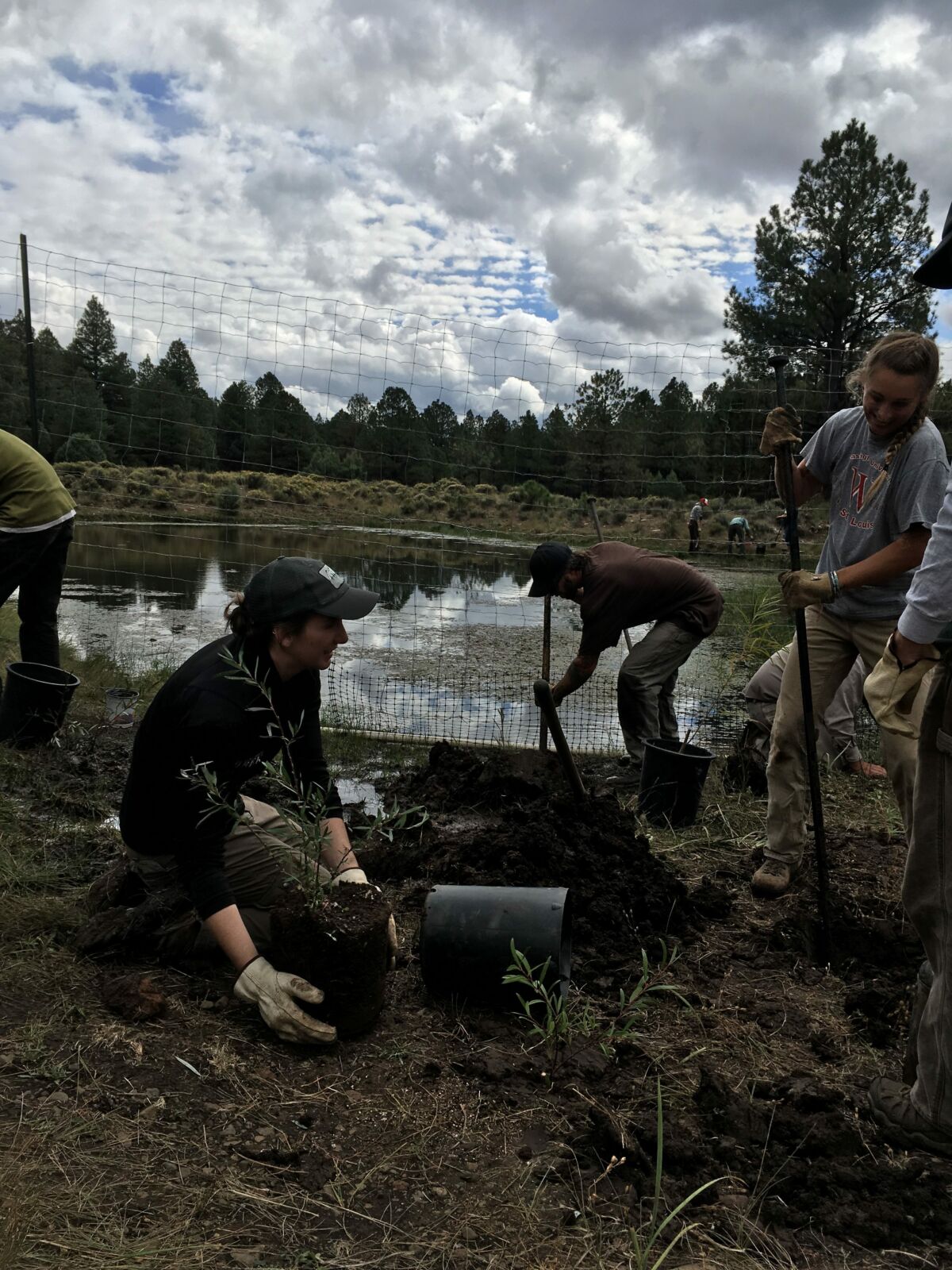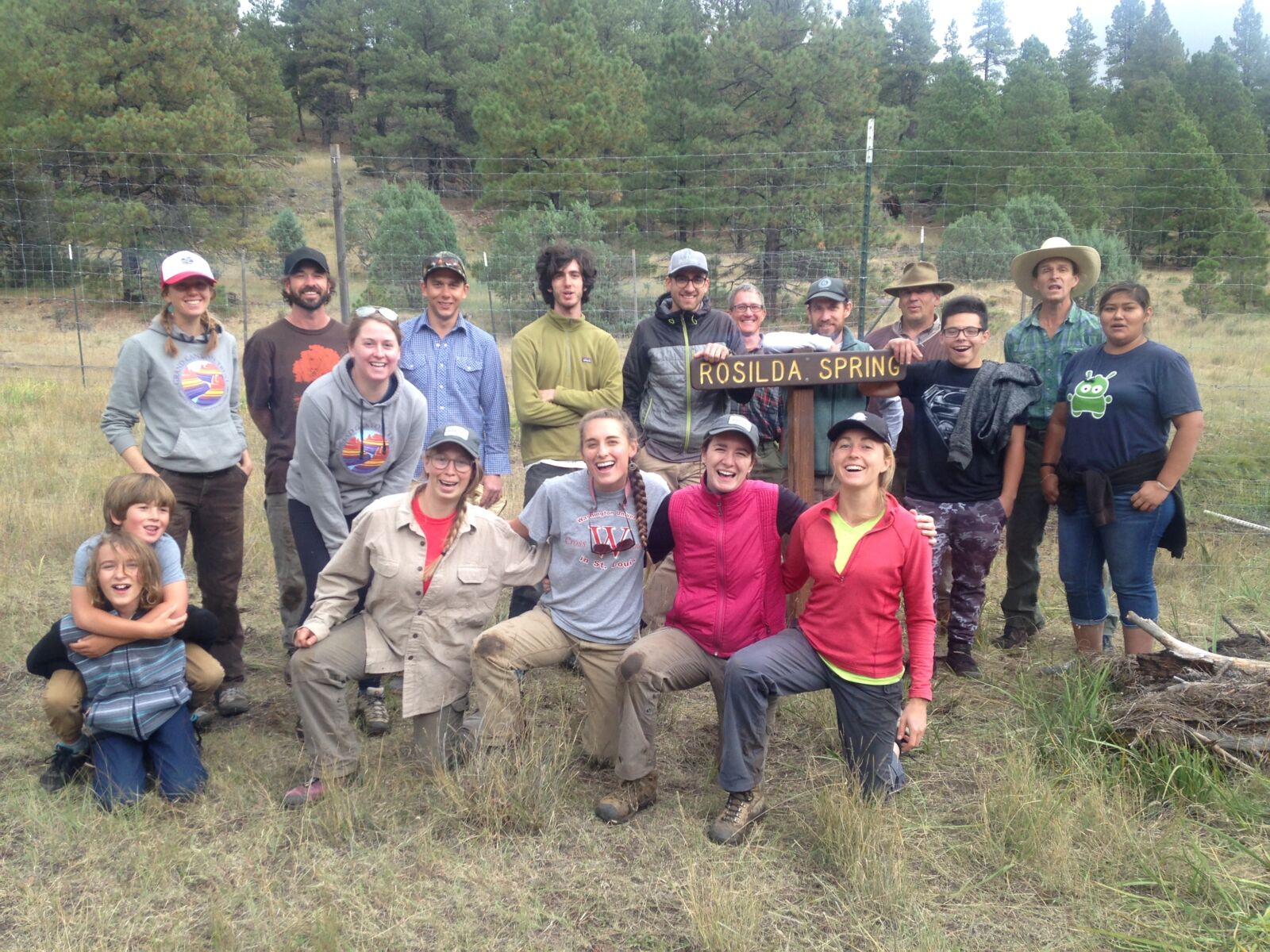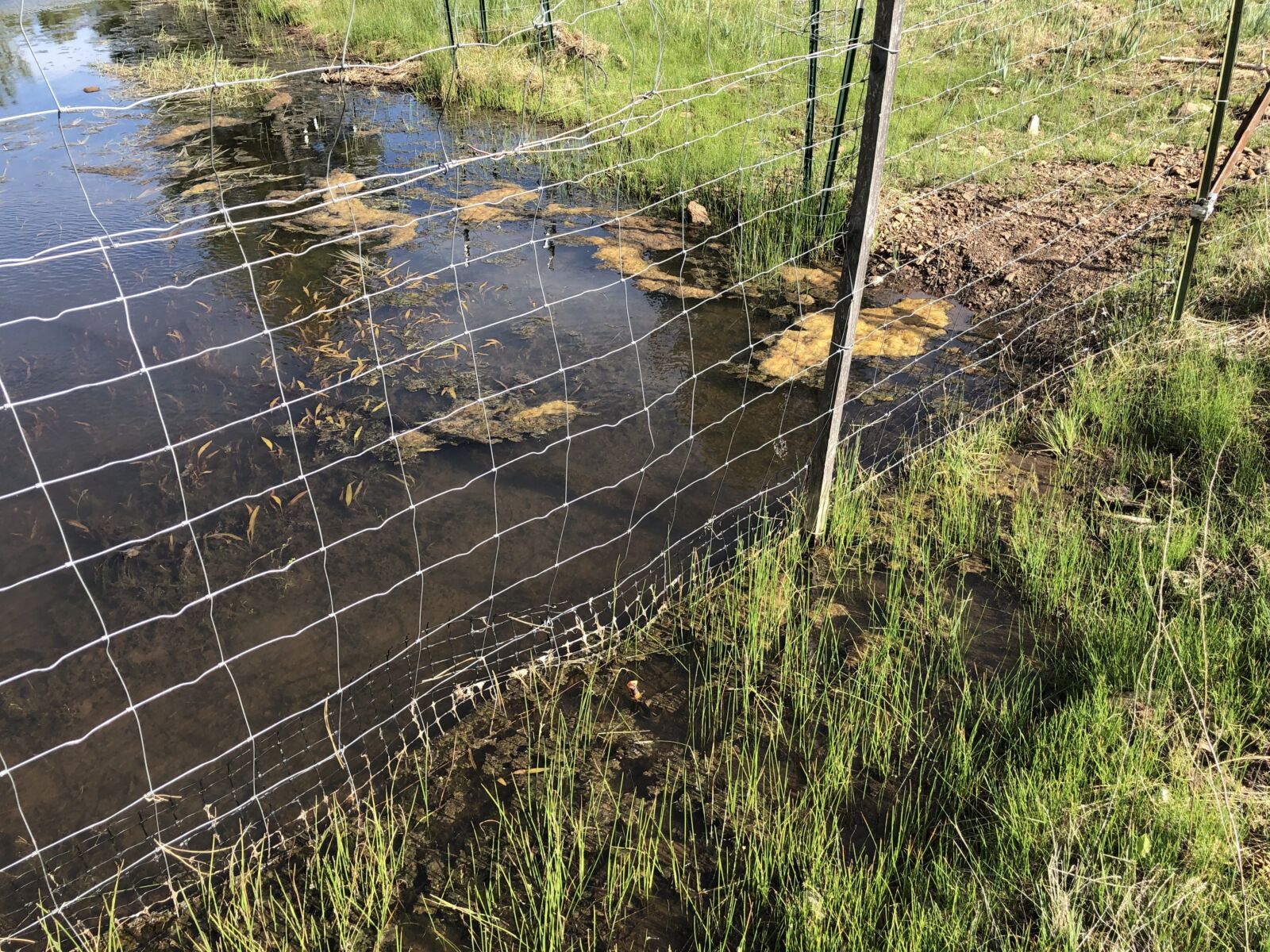Drills buzzed and rebar clacked as a fence was assembled before our eyes. This was the scene at Rosilda Spring on the Kaibab National Forest just south of the Grand Canyon in the fall of 2018. Volunteers from Friends of Northern Arizona Forests, experts at fencing, brought the tools, skills, and people power. T-posts went into the ground, evenly spaced around the spring’s perimeter. Wire mesh was unrolled and fastened quickly. Corner brackets were assembled and secured. The final touch was a beautiful painted wood sign.
The next morning, volunteers from Northern Arizona University hiked out and together with direction from TerraBIRDS, a nonprofit empowering youth through gardening, planted 32 native willows and 20 native sedges and rushes within the newly fenced exclosure.


Springs are places where groundwater is exposed at the surface. Here in the arid Southwest, springs are small but critical water sources for a variety of native plants and wildlife. However, springs are also some of the most threatened systems in the region, vulnerable to overuse and degradation. On National Forests, balancing the use of these rare water sources for a range of entities is an ongoing challenge.
Rosilda Spring, amidst the towering ponderosa pine trees of the Kaibab National Forest, supports a stock tank and overflow wetland where surveyors have spotted tree frogs, coyotes, garter snakes, red-tailed hawks, and other native species. However, the spring’s source and its surroundings have been trampled by grazing animals, leaving banks bare and spring flow limited.

With support from the National Forest Foundation’s Northern Arizona Forest Fund, the U.S. Forest Service, Grand Canyon Trust, and Arizona Game and Fish Department teamed up to plan and implement a compromise solution. The resulting 8-foot tall, 85-foot x 40-foot exclosure fence protects the spring’s source while still allowing animals to access the nearby stock tank. The native vegetation that was planted provides bank stability and improves habitat diversity.
Now, a year and a half after our initial volunteer days, we see those native willows, rushes, and sedges thriving inside the fenced exclosure, protected from elk and livestock grazing. Water trickles out of the hillside and tumbles among the plants toward the stock tank.

The spring in May 2020, healthy and protected.
Springs are resilient – as long as groundwater continues to flow. As dry spells intensify across the Southwest, protecting springs is ever more important. Our efforts show that working together can support the resiliency of these vital wetland areas in our National Forests.

